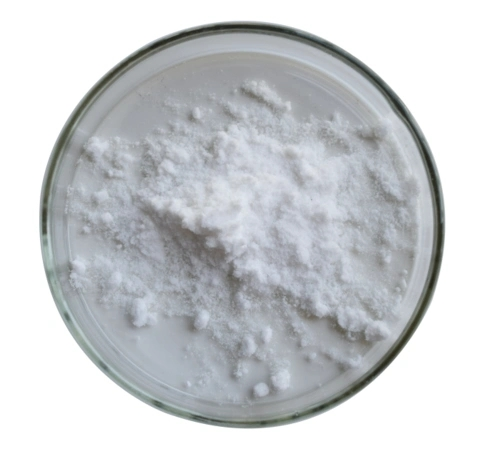How to use deoxyarbutin powder?
Deoxyarbutin powder has gained significant attention in the skincare industry for its potent skin-brightening properties. This powerful ingredient, derived from the natural compound arbutin, offers a safer alternative to traditional skin-lightening agents. In this comprehensive guide, we'll explore the best methods for applying deoxyarbutin powder, how it helps brighten skin tone, and address safety concerns for daily use.
Best Methods for Applying Deoxyarbutin Powder
To maximize the benefits of deoxyarbutin powder, it's crucial to apply it correctly. Here are some effective methods for incorporating this powerful ingredient into your skincare routine:
Mixing with Your Favorite Moisturizer
One of the simplest ways to use deoxyarbutin powder is by mixing it with your regular moisturizer. This method allows for easy integration into your existing skincare routine.
- Start with a pea-sized amount of your moisturizer
- Add a small amount of deoxyarbutin powder (typically 0.1% to 0.5% concentration)
- Mix thoroughly until the powder is fully incorporated
- Apply the mixture to your face, focusing on areas with hyperpigmentation
This approach ensures even distribution of the deoxyarbutin powder across your skin, promoting uniform brightening effects.
Creating a DIY Serum
For those who prefer a more concentrated application, creating a DIY serum with deoxyarbutin powder can be an excellent option.
- In a small, clean container, mix deoxyarbutin powder with a carrier oil like jojoba or squalane
- Use a 1-2% concentration of deoxyarbutin powder
- Stir well to ensure the powder is fully dissolved
- Apply a few drops of the serum to clean, dry skin before moisturizing
This method allows for a more targeted application, making it ideal for treating specific areas of concern.
Incorporating into Your Toner
Another effective way to use deoxyarbutin powder is by adding it to your toner. This method is particularly beneficial for those with oily or acne-prone skin.
- Pour a small amount of your favorite alcohol-free toner into a separate container
- Add deoxyarbutin powder at a concentration of 0.5% to 1%
- Shake well to ensure the powder is fully dissolved
- Apply the toner to your face using a cotton pad or by patting it into your skin with clean hands
This approach allows the deoxyarbutin to penetrate deeper into the skin, potentially enhancing its brightening effects.
Using as a Spot Treatment
For targeted treatment of dark spots or areas of hyperpigmentation, deoxyarbutin powder can be used as a spot treatment.
- Mix a small amount of deoxyarbutin powder with a few drops of water or aloe vera gel
- Create a paste-like consistency
- Apply directly to the affected areas using a clean cotton swab
- Leave on overnight and rinse off in the morning
This method allows for a more concentrated application on specific problem areas, potentially leading to faster results.
Adding to Your Sunscreen
Given that sun exposure can exacerbate hyperpigmentation, incorporating deoxyarbutin powder into your sunscreen can provide dual benefits.
- Mix a small amount of deoxyarbutin powder with your daily sunscreen
- Use a concentration of 0.1% to 0.3%
- Apply the mixture evenly across your face and exposed skin
- Reapply every 2 hours when exposed to sunlight
How Deoxyarbutin Powder Helps Brighten Skin Tone?
Deoxyarbutin powder is renowned for its skin-brightening properties, but understanding how it works can help you appreciate its efficacy and use it more effectively. Let's delve into the science behind this powerful ingredient.
The Science of Skin Pigmentation
To comprehend how deoxyarbutin works, it's crucial to understand the process of skin pigmentation. Melanin, the pigment responsible for skin color, is produced by cells called melanocytes. The production of melanin is regulated by an enzyme called tyrosinase.
Deoxyarbutin as a Tyrosinase Inhibitor
Deoxyarbutin powder functions primarily as a tyrosinase inhibitor. By inhibiting this enzyme, it effectively reduces the production of melanin in the skin. This mechanism of action is what gives deoxyarbutin its potent skin-brightening abilities.
- Deoxyarbutin binds to tyrosinase, preventing it from catalyzing melanin production
- It's more effective than its predecessor, arbutin, in inhibiting tyrosinase activity
- The inhibition is reversible, making it safer than some permanent skin-lightening agents
Comparative Efficacy
Studies have shown that deoxyarbutin is significantly more effective than many other skin-brightening agents:
- It's approximately 350 times more potent than arbutin
- About 150 times more effective than kojic acid
- Around 10 times more potent than hydroquinone
This high level of efficacy means that even small amounts of deoxyarbutin powder can produce noticeable results.
Addressing Different Types of Hyperpigmentation
Deoxyarbutin powder is versatile in its ability to address various forms of hyperpigmentation:
- Sun spots and age spots
- Melasma
- Post-inflammatory hyperpigmentation
- Freckles
Antioxidant Properties
Beyond its tyrosinase-inhibiting abilities, deoxyarbutin also exhibits antioxidant properties. This means it can help protect the skin from free radical damage, which can contribute to premature aging and uneven skin tone.
Gradual and Natural-Looking Results
Unlike some harsh skin-lightening agents, deoxyarbutin works gradually to brighten the skin. This results in a more natural-looking improvement in skin tone over time, rather than a sudden and dramatic change that can look artificial.
Synergistic Effects with Other Ingredients
Deoxyarbutin powder can work synergistically with other skin-brightening ingredients for enhanced results:
- Vitamin C: Boosts collagen production and provides additional antioxidant benefits
- Niacinamide: Helps improve skin barrier function and reduce inflammation
- Alpha hydroxy acids (AHAs): Enhance exfoliation, allowing deoxyarbutin to penetrate more effectively
By understanding how deoxyarbutin powder works to brighten skin tone, you can make informed decisions about incorporating it into your skincare routine and maximize its benefits for your skin.
Is Deoxyarbutin Powder Safe for Daily Use?
As with any skincare ingredient, safety is a primary concern when considering the use of deoxyarbutin powder. While it's generally considered a safer alternative to some traditional skin-lightening agents, it's important to understand its safety profile and potential risks.
General Safety Profile
Deoxyarbutin is typically well-tolerated by most skin types. It's considered a safer alternative to hydroquinone, which has been associated with various side effects and safety concerns. However, it's crucial to note that safety data on long-term use is still limited.
Potential Side Effects
While deoxyarbutin is generally safe, some users may experience mild side effects:
- Skin irritation
- Redness
- Dryness
- Itching
Concentration Matters
The safety of deoxyarbutin powder is closely tied to its concentration. Most studies suggest that concentrations between 0.1% and 3% are safe for use in skincare products. However, the Scientific Committee on Consumer Safety (SCCS) has raised concerns about the use of deoxyarbutin in face creams at concentrations up to 3% due to the potential release of hydroquinone.
Hydroquinone Release Concerns
One of the primary safety concerns with deoxyarbutin is its potential to release hydroquinone. While this release is minimal compared to direct hydroquinone use, it's still a factor to consider, especially for those with sensitive skin or a history of reactions to hydroquinone.
Sun Sensitivity
Like many skin-brightening agents, deoxyarbutin may increase skin sensitivity to UV radiation. It's crucial to use a broad-spectrum sunscreen when using products containing deoxyarbutin, especially during daytime hours.
Pregnancy and Breastfeeding
There's limited data on the safety of deoxyarbutin during pregnancy and breastfeeding. As a precautionary measure, it's advisable for pregnant or breastfeeding individuals to avoid using products containing deoxyarbutin without consulting their healthcare provider.
Recommendations for Safe Use
To ensure safe use of deoxyarbutin powder:
- Start with a low concentration (0.1% to 0.5%) and gradually increase if needed
- Perform a patch test before full application
- Use sunscreen daily when using deoxyarbutin-containing products
- Avoid using other potentially irritating skincare products simultaneously
- If you have sensitive skin or a history of reactions to skin-lightening agents, consult a dermatologist before use
Long-Term Use Considerations
While deoxyarbutin is considered safe for daily use in the short term, long-term safety data is limited. It's advisable to use it in cycles (e.g., 3 months on, 1 month off) rather than continuously, to minimize potential risks associated with prolonged use.
Conclusion
Deoxyarbutin powder is a potent skin-brightening agent that offers a safer alternative to traditional skin-lightening ingredients. When used correctly, it can effectively reduce hyperpigmentation and promote a more even skin tone. By understanding the best application methods, how it works to brighten skin, and important safety considerations, you can maximize the benefits of this powerful ingredient in your skincare routine.
Remember to start with low concentrations, perform patch tests, and always use sun protection when incorporating deoxyarbutin into your regimen. If you have any concerns or questions about using deoxyarbutin powder, don't hesitate to consult with a skincare professional.
For more information about deoxyarbutin powder and other plant extracts, please contact us at emily@jiubaiyuanbiotech.com. Our team at Xi'an Jiubaiyuan Biotechnology Co., Ltd. is committed to providing high-quality plant extracts and expert guidance to meet your skincare needs.

References
1. Boissy, R. E., et al. (2005). "Deoxyarbutin: a novel reversible tyrosinase inhibitor with effective in vivo skin lightening potency." Experimental Dermatology, 14(8), 601-608.
2. Hamed, S. H., et al. (2006). "Comparative study of the efficacy of deoxyarbutin and kojic acid in the treatment of melasma." Journal of Cosmetic Dermatology, 5(4), 281-284.
3. Hu, Z. M., et al. (2009). "Efficacy and safety of a new deoxyarbutin-containing skin-lightening agent in Asian patients with melasma." Journal of Cosmetic Dermatology, 8(1), 63-67.
4. Sugimoto, K., et al. (2004). "Synthesis and tyrosinase inhibitory activity of novel deoxyarbutin derivatives." Chemical and Pharmaceutical Bulletin, 52(4), 474-476.
5. Scientific Committee on Consumer Safety (SCCS). (2015). "Opinion on deoxyarbutin - tetrahydropyranyloxy phenol." SCCS/1554/15.
